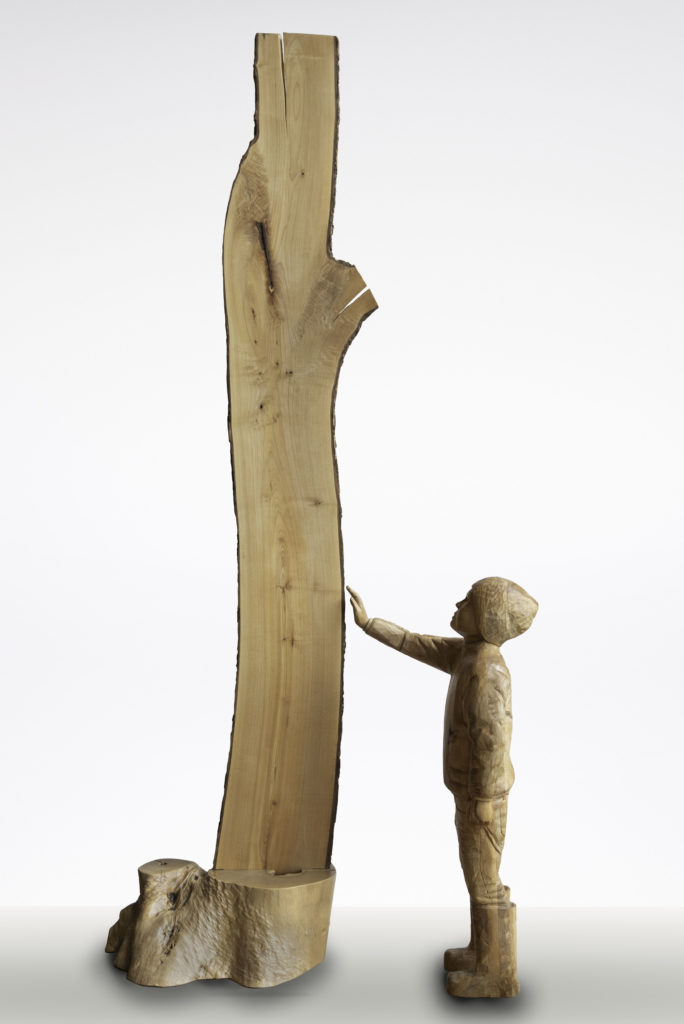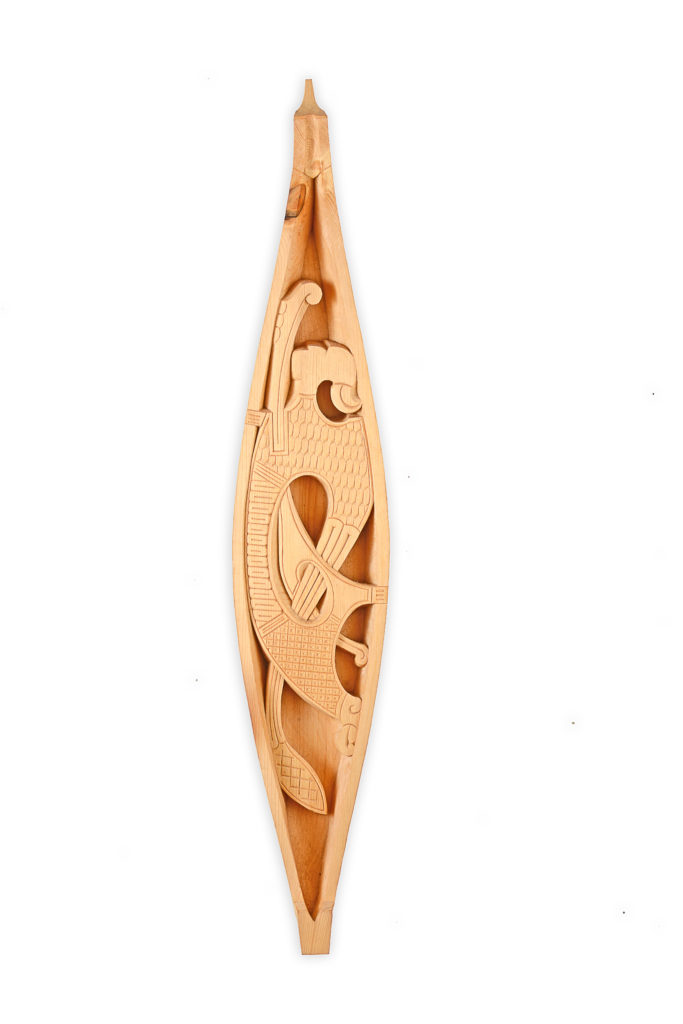The forest runs deep in Christen Dokk Smith. In the suburb outside Oslo, Norway where he grew up, his house overlooked the forest. There is also a deep appreciation for the forest and nature in Norwegian culture. “Everyone is always out hiking.” This early exposure to nature and activity instilled in Christen the conviction that being in nature is important. “Being raised with a connection to nature and now carving old growth cedar, it’s always about respecting nature and the tree and connecting with it.” This feels more important to him than what he’s carving.
After spending nearly six years in the Norwegian military, Christen felt it might be time for something new. It was after taking up meditation that Christen found himself at a conference where he met Bjarte Aarseth, the carver who would later become his mentor. Aarseth invited Christen to the Viking Ship Museum, where they spent an afternoon carving together. Christen immediately loved it but it would be almost another year before he made the transition. During that year, Christen kept thinking back on that day. “I felt authentic when I was there carving,” he says. “Finding your calling and what you’re meant to do can be scary. I needed time to sit and process.” Aarseth invited Christen to an internship at the Viking Museum. During this time, Christen couldn’t have received a better education. “I was trained to think in 2D and 3D forms. I could reproduce anything.” That technical groundwork would take him into the next stage of his carving career.

In 2012, he moved to the West Coast of Canada. He was at a transition point. His contract at the museum was at its end and he found himself visiting Canada multiple times a year. Tofino is a bit of a woodcarver’s mecca, he laughs. “There are probably as many carvers in Tofino as there are in all of Norway.” Upon moving here, he learned from some of the master carvers in the area: Joe Martin, Joe David, and Levi Martin. “At the museum, I was taught the art of making these copies but I was never taught why Vikings carved the way they did. That knowledge has been lost. Scholars can come up with theories as to what these things mean but they are just theories.” To learn from First Nations carvers and to see the way stories are told and play out in the carvings has been a meaningful learning experience. “There is a storytelling to carving.”

This stewarding of history informs his current project. Christen remains with one foot in Norway and in his technical training of historical reconstruction. The historical Urnes Stave Church in Norway, stewarded by the National Trust of Norway, dates back to the 12th century and is believed to be the oldest of its kind. In the 1970’s, Urnes Stave Church was listed as a UNESCO World Heritage site. It has been in recent years that the National Trust has decided they wanted a copy made of a north-facing portal. But in Christen’s words, it’s not just about making a copy but about documenting the process. Christen is one of sixteen carvers working collaboratively to approach the reproduction of the portal. “It’s not just about caretaking the object but maintaining the craft and the stories behind it.” The hope is to recreate the portal as authentically as possible, without resorting to modern tools. The team has been going through archeological findings to source images of historically accurate tools and working with a blacksmith to have the tools themselves recreated. There are no traces of any pencil or markings on the design and so while there was likely rough outlines, Christen says that, “it is believed that this design was created free-handedly.” The project will take Christen to Norway for at least a month next year, where he will carve with the other carvers on the team. Working with a team of four on the left side of the portal panel, they have calculated it will take them roughly a thousand hours to complete. Over the summer months of the carving projects, the carvers will be available to the hundreds of visitors that come to view the Urnes Stave Church as a UNESCO World Heritage site.

The craftsmanship is central to Christen’s ethic, which he credits largely to his technical training. “My training at the museum was very thorough and I put so much emphasis on the quality of the carving.” For him, every piece is not just an artistic piece but a piece that talks about the quality of craftsmanship. “From what I see, there are great ideas, but I sometimes feel that some of them miss this “craft” aspect that old artwork had.” The expression needs to be rooted in something and this advice for quality is something Christen credits his mentor, Bjarte Aarseth with. “Michelangelo was not only a brilliant man but a brilliant stonecarver.” Having traditions that anchor the craft, and being committed to stewarding and protecting those traditions is a way to produce art that connects through time, centuries later.
You can find Christen at the Carving Shed on Chesterman Beach on Tuesdays, Thursdays and Fridays. For more information on the Urnes Stave Church project, visit the links below.
- www.christendokksmith.com
- https://www.riksantikvaren.no/en/worl…
- https://norwegianscitechnews.com/2019…
- www.stavechurch.com/urnes-stave-church/?lang=en
To watch Christen’s Artist Talk, click here.

